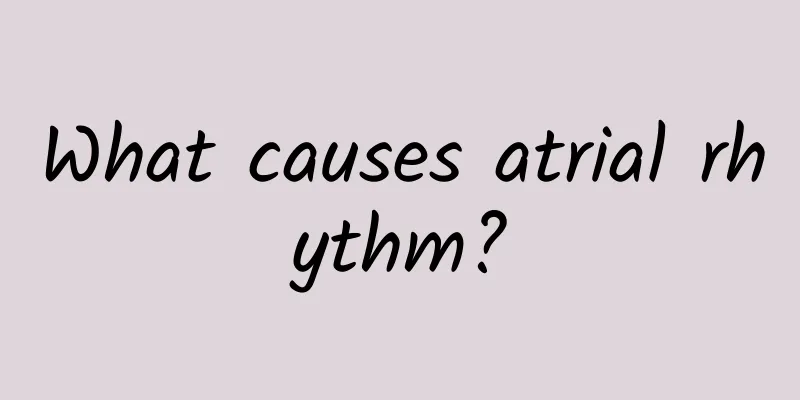What should you pay attention to after a head fall?

|
Bumps and bumps are very common in life. Some people accidentally drop their heads. Generally, after a head drop, you should first check if there is any discomfort in your body, such as dizziness, nausea, vomiting, etc. If so, you must go to the hospital for examination immediately. If there is no discomfort, you don’t have to worry too much, but you need to check regularly to strengthen your information and avoid psychological pressure. What should you pay attention to after a child falls and injures his head? If you have a large scalp laceration and bleeding continues for more than 10 minutes, you need to go to the hospital to check the wound. The scalp has great tension, and scalp lacerations larger than 1 cm are not easy to heal naturally, so debridement and suture of the wound are often required. If an infant or young child continues to cry and is difficult to comfort (for more than 30 minutes) after a fall, he or she needs to be taken to the hospital for examination to rule out intracranial hemorrhage, fractures, etc. Children who stop crying soon after a fall and continue playing as usual usually do not have brain damage, but they also need to be carefully observed for at least 24 hours. If repeated vomiting occurs >= 2 times after a fall, the patient needs to be sent to the hospital for observation to exclude concussion, intracranial hemorrhage, etc. If bleeding or "water" (cerebrospinal fluid?) occurs in the nostrils or external auditory canal after a fall, you need to seek medical attention immediately. These may be coming from inside the skull and need to be identified. After a child falls and cries loudly, clear mucus may flow from his nostrils, similar to "water". However, watery liquid continues to flow out after the child stops crying. There is a high possibility of cerebrospinal fluid leakage, indicating intracranial injury and the child needs to be sent to the doctor. Bruises that appear around the eye sockets after a fall (commonly known as panda eyes, as shown in the picture) often indicate bleeding around the eye sockets or intracranial fractures, and medical attention is required. If you experience changes in consciousness, abnormal behavior, incoherent speech, disorientation, progressively worsening severe headaches, convulsions, limb paralysis or movement disorders under any circumstances after a fall, you need to be sent to the hospital for diagnosis and treatment immediately. How long do you need to observe? The 24 hours after injury is the key time window for observation, as most changes in the disease occur during this time. In rare cases, the site of certain intracranial hemorrhages is special (epidural hemorrhage), and the bleeding is slower (in very rare cases it can last for days to weeks, more common in adults and the elderly). However, in most cases, if there are no problems within 48 hours after the injury and the child is alive and well, the alarm can basically be lifted. What treatments can be done early on? Bruise or hematoma often occurs when the head falls or bumps. In addition to paying close attention to the above symptoms, preliminary treatment of the trauma should also be carried out. For hematomas or bruises without skin damage or bleeding, cold compresses can be considered in the early stages to reduce subcutaneous bleeding and spread. Ice packs or refrigerated bagged milk can be used. A few points must be noted: 1. The ice bag should be wrapped with a dry towel or handkerchief, and should not be placed directly on the skin to avoid frostbite. 2. Cold compress is generally applied within 48 hours after injury. The earlier you start, the better the effect. There is usually no obvious effect after 48 hours. 3. Each cold compress should last about 15 minutes. It can be done multiple times depending on the child's tolerance. There is no special limit on the number of times. 4. If there are abrasions or a small amount of bleeding on the skin, you can first use a cotton swab, gauze or dry towel to apply pressure to stop the bleeding, then disinfect it with complex iodine or alcohol, and then apply cold compress after it dries. Wounds that bleed profusely require hospital treatment. |
<<: Are you feeling dizzy and confused?
>>: Throbbing pain on the left side of your head?
Recommend
What medicine to use when you have inflammation during pregnancy
After a woman becomes pregnant, she needs to pay ...
What is hemoptysis?
Hemoptysis refers to bleeding in the trachea or l...
Effect of corn silk on proteinuria
Corn is a treasure from head to toe. During the f...
Can garlic cure psoriasis?
Garlic is a folk remedy for treating psoriasis. W...
What to do if your baby has a persistent low fever
If the baby at home has a low fever that won'...
What is the medicinal value of tortoise shell?
Tortoise shells are usually brown or tan in color...
How much is a box of Astragalus granules?
A box of Astragalus granules usually costs around...
Can Chinese medicine be heated?
Everyone must have been drinking Chinese herbal d...
What is the reason for the tooth pain
Toothache is quite common in life. As the saying ...
What is the difference between raw Rehmannia and cooked Rehmannia
Both raw rehmannia and cooked rehmannia have medi...
Suddenly stood up and felt dizzy and convulsed
Although dizziness is a common symptom of the dis...
Did you know that the top ten Chinese herbal teas can nourish the kidneys and strengthen yang?
Kidney-tonifying Chinese herbal tea is becoming m...
What are spider nevi? Causes of spider veins
The appearance of spider nevi is closely related ...
Does breast enhancement essential oil contain hormones?
Women who love beauty are particularly concerned ...
How to reduce belly fat?
In daily life, a bulging belly is a relatively co...









